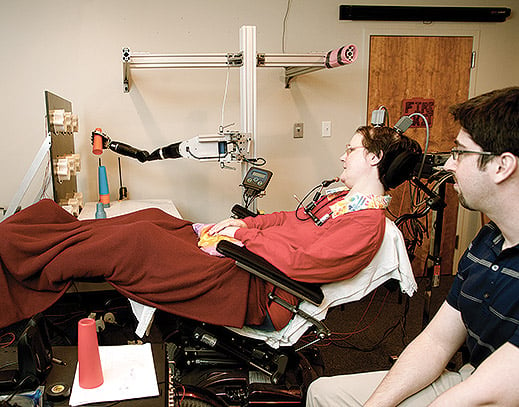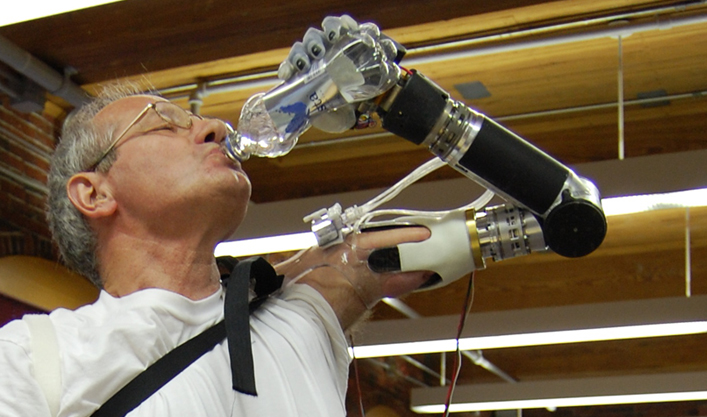History of Computers - Robotic Limbs
Created by: Chris Randall
Introduction
Scientists have been trying to develop robotic limbs and prosthetic limbs for anyone with a disability. Prosthetic limbs have not been able to completely satisfy handicapped people because they do not have their complete mobility, and that is where robotic limbs come into play.
Overview
The challenge of creating robotic limbs is getting technology to work with the human mind and interpret all of the functions a person would want to do. Antonio Regalado, a researcher working with robotic limbs, works with Scheuermann, a 54 year old paralyzed woman. For brain-controlled computers to become a medical product, there has to be an economic rationale, and the risks must be offset by the reward. So far, Scheuermann’s case has come closest to showing that these conditions can be met. In 2013, the Pittsburgh team reported its work with Scheuermann in the medical journal the Lancet. After two weeks, they reported, she could move the robot arm in three dimensions. Within a few months, she could make seven movements, including rotating Hector’s hand and moving the thumb. At one point, she was filmed feeding herself a bite of a chocolate bar, a goal she had set for herself.[1]. The researchers tried to show that they were close to something practical—helping with so-called “tasks of daily living” that most people take for granted, like brushing teeth. At first Scheuermann kept demonstrating new abilities. “It was success, success, success,” she says. But controlling Hector has become harder. The reason is that the implants, over time, stop recording. The brain is a hostile environment for electronics, and tiny movements of the array may build up scar tissue as well. The effect is well known to researchers and has been observed hundreds of times in animals. One by one, fewer neurons can be detected. [2].
Significance
Many paralyzed people have been eager to help with experiments with robotic limbs. A direct quote from a paralyzed man was “I’ll take it! Cut off my dead arm and give me a robotic one that I can FEEL with please!” [3]. in reference with robotic limbs. “The next big step is asking, how many dimensions can you control?” says John Donoghue, a neuroscientist at Brown University who develops brain-computer interfaces. “Reaching out for water and bringing it to the mouth takes about seven degrees of freedom. The whole arm has on order of 25 degrees of freedom.”[4]. Even if the tests are successful, researchers face a big challenge; they must show that the invasive cortical control system is significantly better than noninvasive approaches. Amputees using the shoe-controlled interface can pick up boxes, operate a drill, and even use chopsticks.
Pictures


References
- ↑ http://www.technologyreview.com/featuredstory/528141/the-thought-experiment/
- ↑ http://www.technologyreview.com/featuredstory/528141/the-thought-experiment/
- ↑ http://www.technologyreview.com/featuredstory/528141/the-thought-experiment/
- ↑ http://www.technologyreview.com/news/421347/robotic-limbs-that-plug-into-the-brain/